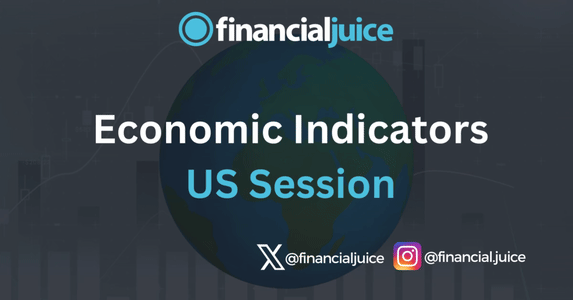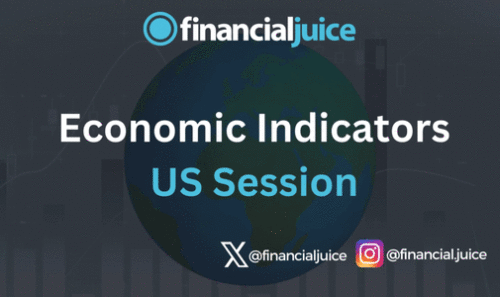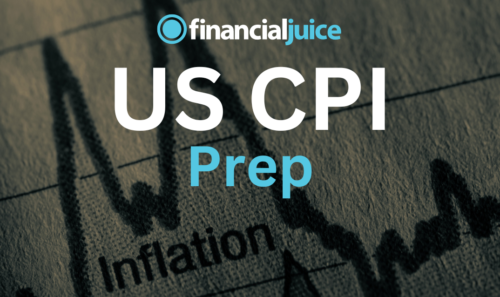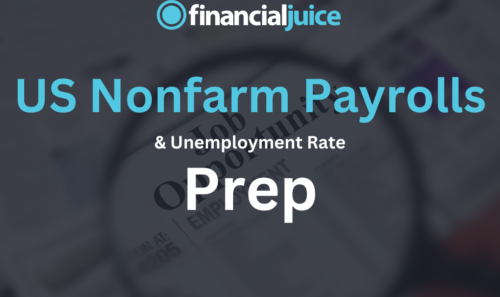
Week Ahead: Economic Indicators (US)
Hey, Traders!
For the July 22nd week, here is a list of all of the major economic indicators being released during the US Session, with a brief synopsis of what they represent and what to possibly expect from the markets in reaction.
NOTE: This week marks the start of the Fed blackout period ahead of the next Monetary Policy meeting, so there will not be any Fed members speaking on Monetary Policy this week.
Tuesday 23rd July
10:00 ET
US Existing Home Sales for June
US Existing Home Sales is a monthly report released by the National Association of Realtors (NAR) that measures the number of previously owned homes sold during the month.
It provides insights into the housing market’s health and consumer demand.
What to Expect
Though this data is unlikely to cause a market reaction without a large deviation, an increase in existing home sales indicates strong market demand and economic confidence, while a decrease may suggest economic challenges or lower consumer confidence.
Wednesday 24th July
09:45 ET
Bank of Canada Rate Decision
The Bank of Canada Rate Decision is the announcement made by the Bank of Canada regarding changes to its key interest rate, known as the overnight rate.
This decision is made periodically, usually eight times a year, and aims to control inflation, manage economic growth, and stabilize the financial system.
The rate affects borrowing costs for consumers and businesses, influencing economic activity.
The decision is based on various economic indicators such as inflation, employment, and GDP growth.
With the interest rate, the BoC will also release a rate statement, which is prepared after the meeting by the BoC officials. It goes over their view on the current economic landscape and can hint at the future path of monetary policy.
What to Expect
According to median analyst estimates, the BoC expected to keep rates unchanged at 4.75%, after being the first G7 country to cut its benchmark rate at its last interest rate meeting in June from 5%.
However, Canadian interest rate futures pricing showed a near 90% chance of a 25 bps cut following the June Canadian CPI data released on July 16th.
This mismatch between scenarios means that we could see a market reaction from a no-change result or an interest rate cut from the BoC.
If the BoC leaves rates unchanged, this could cause a reversal of the positions from the participants who expected a cut, which would likely cause Canadian dollar strength and Canadian stock weakness.
However, if we see a cut, this could cause a reversal in the positions from those participants who were paying attention to the median analyst estimates for no change, which would likely cause weakness in the Canadian dollar and strength in Canadian stocks.
On top of this double-sided event risk, markets will also pay attention to the rate statement.
A more dovish tilt in the statement, implying a need for patience in the future rate path,
US S&P Manufacturing PMI July Prelim
The US S&P Manufacturing Purchasing Managers’ Index is a monthly economic indicator compiled by S&P Global that measures the activity level of purchasing managers in the manufacturing sector.
It assesses various factors such as new orders, output, employment, supplier delivery times, and inventory levels.
As a diffusion index, a PMI reading above 50 indicates expansion in the manufacturing sector, while a reading below 50 signals contraction.
This index helps gauge the health of the manufacturing industry and provides insights into overall economic conditions.
What to Expect
Markets will be looking for signs of further cooling in the manufacturing sector in order to fuel bets for Fed rate cuts this year.
This means a lower-than-expected number, especially if it is below 50, could result in strength in US stocks and weakness in the dollar.
However, if it is much lower than expected, then this could cause a volatile/neutral reaction in US stocks, as traders may weigh the impact it could have on corporate profits as well as monetary policy.
The opposite is also true, a higher-than-expected read would likely be seen as an upside inflation risk which could push back bets for Fed rate cuts this year, which in turn could cause weakness in US stocks and strength in the dollar.
But again, if it comes out considerably higher than expected, then the reaction in US stocks may be more volatile, as traders weigh the potential increase in corporate profits against the monetary policy implications of a hot manufacturing sector.
10:30 ET
US Weekly EIA Crude Oil Inventories
The US Weekly EIA Crude Oil Inventories report, released every Wednesday by the Energy Information Administration, details the amount of crude oil held in storage across the United States.
This data helps assess supply and demand in the oil market and can influence oil prices.
What to Expect
An increase in inventories suggests higher supply or lower demand, which could drive down oil prices, while a decrease indicates lower supply or higher demand, which could strengthen oil prices.
Thursday 25th July
08:30 ET
US GDP QoQ Annualised
US Gross Domestic Product measures the total value of all goods and services produced within the United States.
It serves as a comprehensive gauge of the country’s economic performance and is published by the Bureau of Economic Analysis on a quarterly basis.
GDP includes consumer spending, business investments, government expenditures, and net exports (exports minus imports).
What to Expect
Changes in GDP growth rates reflect the overall health and direction of the US economy, influencing policy decisions and providing insights into economic trends.
In terms of the market’s potential reaction to this data point, this is tricky to gauge at the current stage of the economic cycle.
On one hand, a higher-than-expected GDP can be seen as an upside inflation risk, as it can indicate increased demand through increased consumer and government expenditures.
On the other hand, inflation is coming down towards the target despite resilient consumer demand, so a higher GDP number could also reinforce the chances for a soft landing, with inflation still returning to the target.
US Weekly Initial & Continued Jobless Claims
The US Weekly Initial Jobless Claims report provides the number of people who filed for unemployment benefits for the first time during the past week, serving as a measure of new layoffs.
This indicator is a key gauge of the labor market’s health and economic activity, with lower numbers suggesting fewer layoffs and a stronger job market.
Continued Jobless Claims, on the other hand, represent the number of people already receiving unemployment benefits.
This figure helps gauge the longer-term employment situation and provides insight into how easily displaced workers are finding new employment.
Both metrics are monitored by investors, policymakers, and economists because they offer real-time insights into labor market conditions and, by extension, the overall health of the economy.
What to Expect
Higher jobless claims indicate a higher unemployment rate.
The FOMC have noted that they see a higher unemployment rate to be in line with inflation’s descent back to the 2% target.
This means if Jobless Claims came in higher than expected, it could cause strength in US stocks and weakness in the dollar, as traders increase the chances of rate cuts this year.
Friday 26th July
08:30 ET
US PCE Price Index for June
The US Personal Consumption Expenditures Price Index is a measure of inflation that gauges the average change in prices consumers pay for goods and services over time.
Published by the Bureau of Economic Analysis, the PCE Price Index is considered a key indicator of inflationary trends in the economy.
It is based on personal consumption expenditures, reflecting how households allocate their spending across various categories. While similar to the Consumer Price Index (CPI), the PCE has some methodological differences, including the treatment of healthcare and the inclusion of a broader range of expenditures.
Most importantly, unlike CPI, it does not monitor a fixed basket of goods in every report and makes adjustments for the goods and services that are tracked based on consumer spending habits during the reporting period.
The ‘Core’ PCE Price Index is the Fed’s preferred gauge of inflation, stripping out volatile food and energy components.
What to Expect
If PCE comes in higher than expected, this would be likely to cause markets to reduce bets on interest rate cuts this year.
This repricing could cause weakness in US stocks, and strength in the Dollar and US Treasury yields.
If it comes in lower than expected, this could lead the Fed to have faith that inflation is still returning to target, increasing the chance of interest rate cuts this year.
This would cause strength in US stocks and weakness in the dollar.
US Consumer Spending for June
US consumer spending refers to the total amount of money spent by individuals and households on goods and services within the United States.
It encompasses expenditures on a wide range of items, including groceries, housing, transportation, healthcare, entertainment, and more. This metric is crucial for understanding the overall health of the economy because consumer spending typically represents a significant portion of the nation’s Gross Domestic Product (GDP).
When consumer spending is robust, it indicates that individuals have the financial means and confidence to make purchases, thereby stimulating economic growth.
Conversely, a decline in consumer spending can signal economic challenges or a slowdown.
What to Expect
If consumer spending comes in higher than expected, this could implicate upward pressures on inflation, which, in turn, would cause dollar strength and stock weakness.
Likewise, if it comes in cooler than expected, the inverse may be true.
10:00 ET
University of Michigan Sentiment & Inflation Expectations July Final
The University of Michigan Consumer Sentiment Index measures the confidence of US consumers in the economy.
It is based on a survey that assesses consumers’ perceptions and expectations regarding their personal finances, business conditions, and overall economic prospects.
A higher sentiment index indicates increased confidence, which can positively impact consumer spending and economic activity, while a lower index may suggest reduced confidence and potential economic caution.
What to Expect
Consumer sentiment is watched by markets to assess consumer resilience in a high-interest-rate environment. Elevated sentiment may suggest strong demand, potentially leading to inflationary pressures, but it could also signal consumer resilience, reducing recession fears.
In this release, the market focus is on the 1 & 5-year inflation expectations accompanying the sentiment data.
Higher inflation expectations may delay Fed rate cuts, affecting US stocks negatively and strengthening the dollar.





